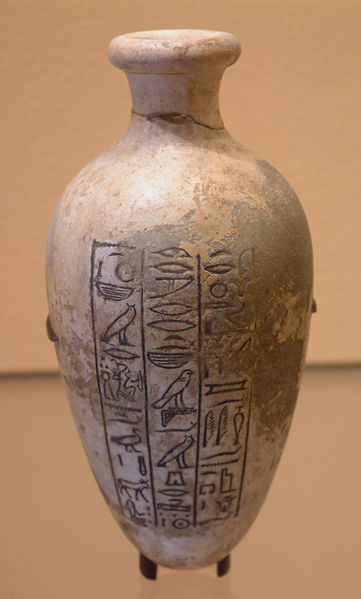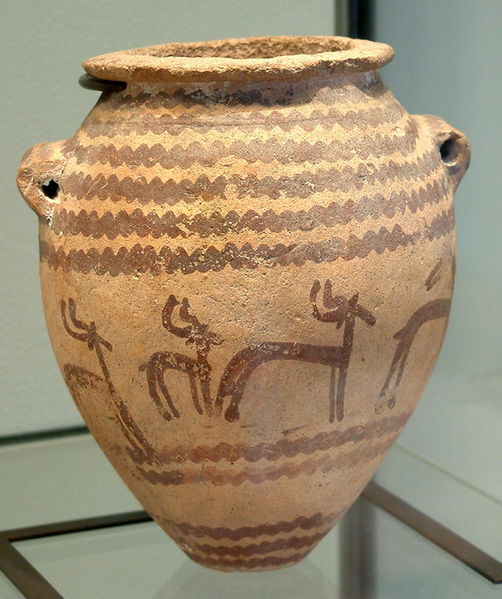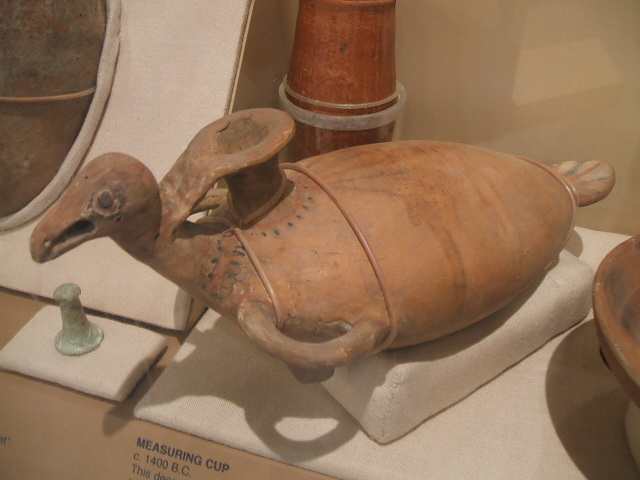Pottery
New Kingdom pottery c.1400 BC
Ancient Egyptians used steatite (some varieties were called soapstone) and carved small pieces of vases, amulets, images of deities, of animals and several other objects. Ancient Egyptian artists also discovered the art of covering pottery with enamel. Covering by enamel was also applied to some stone works.
Different types of pottery items were deposited in tombs of the dead. Some such pottery items represented interior parts of the body, like the heart and the lungs, the liver and smaller intestines, which were removed before embalming. A large number of smaller objects in enamel pottery were also deposited with the dead. It was customary to craft on the walls of the tombs cones of pottery, about six to ten inches tall, on which were engraved or impressed legends relating to the dead occupants of the tombs. These cones usually contained the names of the deceased, their titles, offices which they held, and some expressions appropriate to funeral purposes.

 c
c
